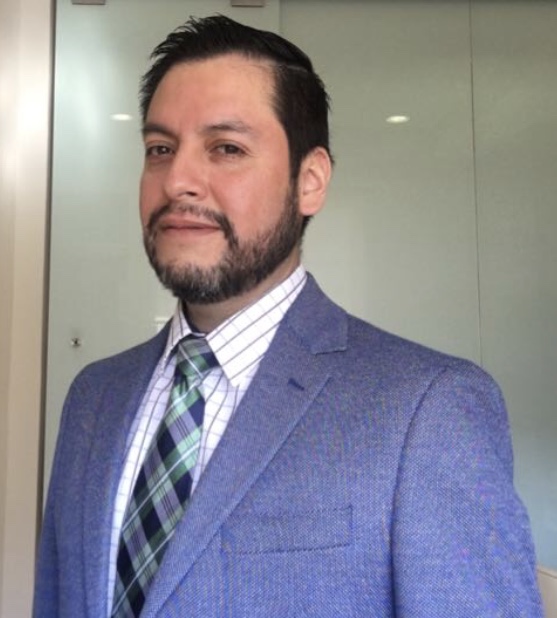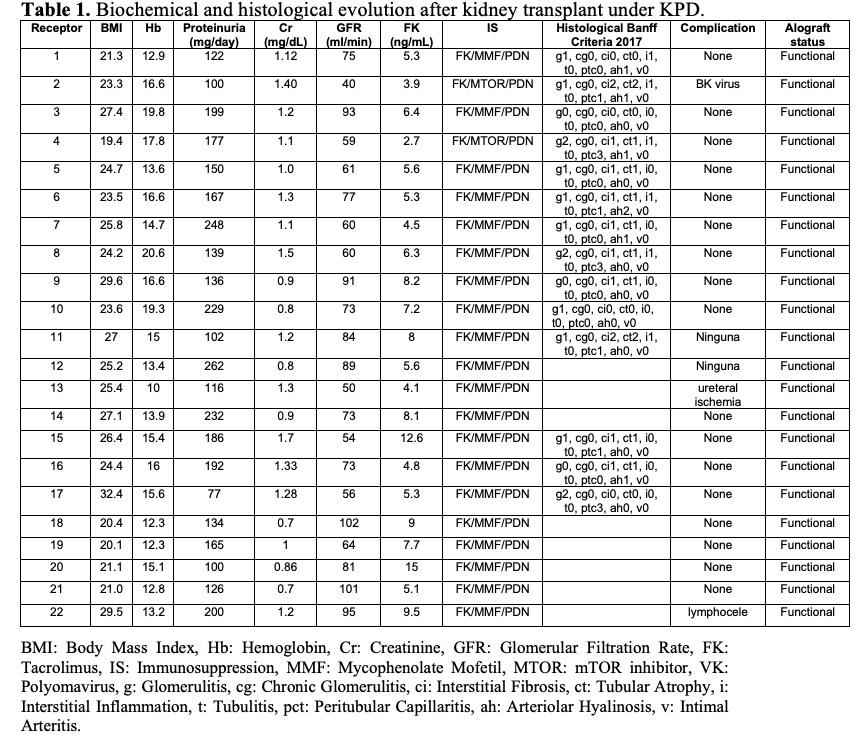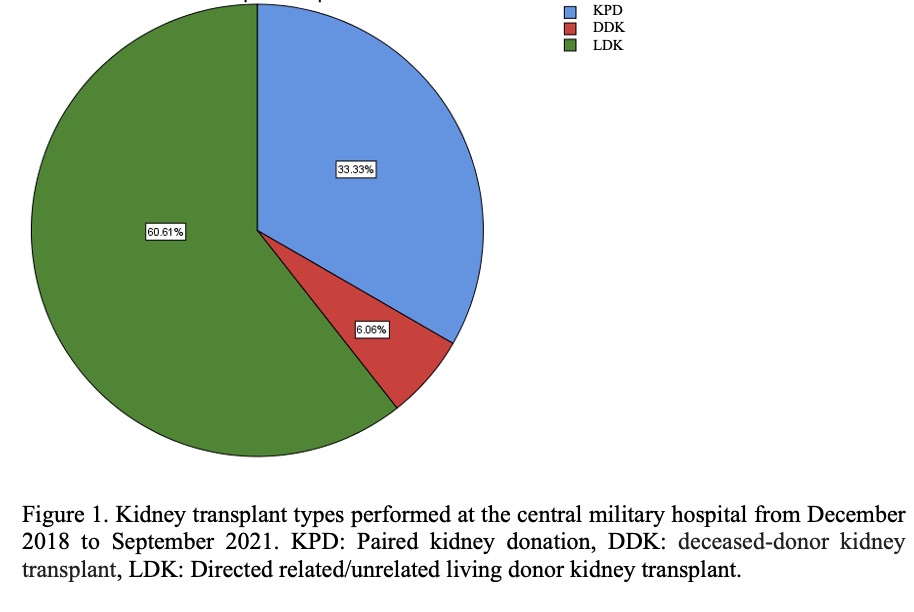
Kidney paired donation in Latin America, from theory to practice
Lucino Bahena Carrera1, Héctor Faustino Noyola Villalobos1, Ricardo Mendiola Fernández1, Edgar Enrique Ramos Díaz1, Marco Antonio Loera Torres1, Carlos Miguel Muñoz Arce1.
1Nephrology and Trasplant, Central Military Hospital, Mexico city, , Mexico
Introduction: Between 25-30% of couples will be ABO or HLA incompatible once they finish the transplant protocol. The Kidney Paired Donation (KPD) program is a modality that resolves this incompatibility by allowing donors to be exchanged. Acord to Newsletter transplant 2020, kidney transplant activity in Latin America under the KPD program is null, however there is a Guatemala case report in 2018 where they started this program and another report from 1998 in Mexico with a series of 12 transplant cases renal with exchange of donors. There has been an evolution over time of the KPD at an international level and to date computer algorithms are used based on the blood group of the donor-recipient, sensitization status and the size of the pool of incompatible couples, determining the best probability of matching success within of the program by optimizing the successful matching of donors and recipients according to the principles of fairness, utility and justice.
Method: Observational, analytical, longitudinal and prospective study from December 2018 to July 2021. Were included all G5 KDIGO chronic kidney patients who were HLA or ABO incompatible with their original donors in the pretransplant protocol and who were transplanted under the program of paired kidney donation in the Central Military Hospital, Mexico, City.
Results: 22 kidney transplants were performed under this program. The most common CKD etiology was not determined (ND) with 31.8%. Survival of the graft and the patient 1 year after transplantation was 100%. The post-transplant glomerular filtration rate receptor (GFR) was 72.5 (± 17) ml/min/1.73 m2SC; the GFR post-donación was 75.04 (± 15.98) ml/min/1.73/m2SC. 36.3% of hypersensitized patients were successfully transplanted whitout plasmapheresis. The mean age of the recipients was 35.67 (± 12.45) years.
The waiting time from admission to the paired program to the transplant was 4.9 months.Inter-hospital donor exchanges have already been carried out; the in-hospital donation rate increased by 33.33%.

Discussion: The Case reports or case series published in latinoamerica´s countries show an adequate evolution of the patients and grafts without major complications as our Hospital.
Conclusion: Transplantation under the paired kidney donation program constitutes a real modality of successful transplantation when there is incompatibility with the original donor. Increased utilization and socialization of this program can increase the country kidney transplantation rate, reducing the waiting list. Our hospital represents the largest published experience in Mexico and latinamerica with this transplant program.

right-click to download
